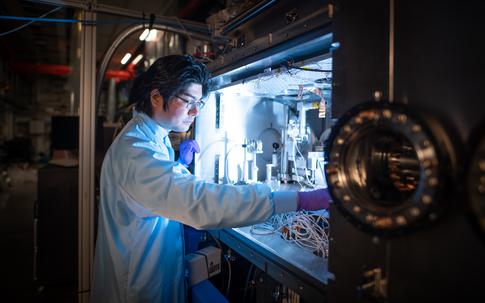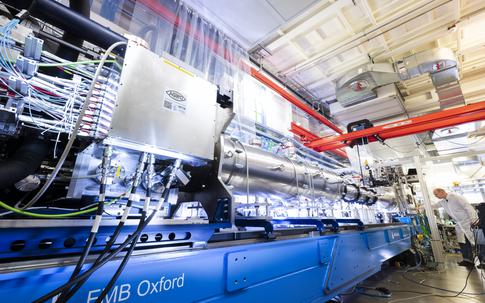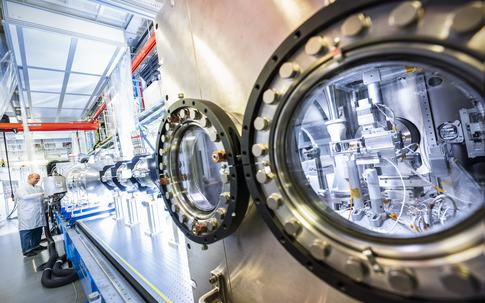European XFEL will contribute to the global campaign against the novel Coronavirus, SARS-CoV-2. X-ray light sources such as European XFEL are one of the most powerful tools for structural biology and can provide insight into the virus that may help to develop therapies to treat the disease. At European XFEL structural biology is one of the key research areas, and the facility is equipped with state-of-the art laboratories and technologies. After six weeks in reduced operation mode European XFEL is now restarting operation of the X-ray laser. Regular user operation is not possible yet, however, proposals for COVID-19 related research at the instruments and research laboratories are being sought.

Scientist Tokushi Sato working at the sample chamber of the SPB/SFX instrument. Copyright European XFEL
One of the six European XFEL experiment stations, the
SPB/SFX instrument, is dedicated to structural biology applications. Several features of the facility make it particularly well suited to this research. The high repetition rate of the extremely bright flashes of the European XFEL enables scientists to measure X-ray diffraction data from samples at a rate more than an order of magnitude more rapidly than at any other XFEL facility world-wide. Structural biology experiments at X-ray free-electron lasers (XFELs) can be performed at room temperature, rather than at cryogenic temperatures as at synchotron light sources. In addition researchers can observe the dynamics of biological reactions and processes such as the interaction between viral and host proteins. European XFEL provides comprehensive support to visiting scientists in sample delivery to the X-ray beam and data analysis.

The experiment station SPB/SFX is used to investigate the three-dimensional structures of biological objects including viruses. Copyright European XFEL / Jan Hosan
European XFEL scientific director Sakura Pascarelli said: "We hope that the research we plan to do will enable rational drug design not just in the current crisis, but also with the long-term potential to better understand processes of virus entry, replication and release in depth. We will intensify our collaborations with laboratories and the scientific community worldwide to be ready to address other, future urgent public health issues requiring rapid-response structural biology.
"Researchers interested in making use of any of the European XFEL’s research infrastructure are invited to contact Sakura Pascarelli, scientific director for hard X-ray instruments, or Adrian Mancuso, leading scientist for the SPB/SFX instrument. All enquiries will be considered and followed up with proposers. Samples containing active virus cannot currently be examined at European XFEL.

Experiments at X-ray free-electron lasers (XFELs) can be performed at room temperature which is an advantage when observing the interaction between viral and host proteins. Copyright European XFEL / Jan Hosan
A broader framework for a coordinated research programme into COVID-19, including the European XFEL user community, will be announced in the near future. At the same time European XFEL will upgrade experimental capabilities to better address this and future biological challenges.
To remain informed, please subscribe to the SPB/SFX mailing list.



